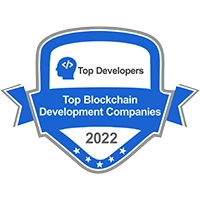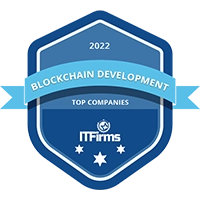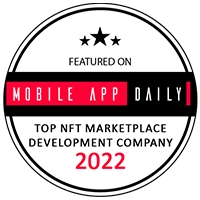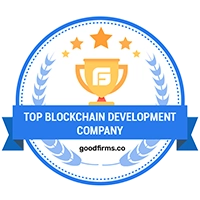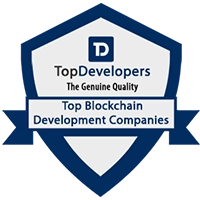Introduction
Start with the Why: Defining Your LLM's Purpose
Before we get into the technical nuts and bolts of building a large language model (LLM), let's hit pause for a moment. Why do you even want to build one? Knowing your why is key. It's like heading out on a road trip without a clear destination, you'll end up driving in circles. So, take a step back and ask: what role will this LLM play in your organization?
For example, are you looking to create a general-purpose language model? Maybe something akin to GPT-3 that handles everything from content generation to customer service? Or, are you aiming to develop a highly specialized model say for legal document analysis, medical research, or industry-specific applications? Defining this purpose upfront will streamline the development process and ensure your LLM serves your specific goals.
Crafting a Use Case That Drives Development
Building a language model isn't just about throwing data at an algorithm and hoping it sticks. The use case will shape everything, from the data you collect to the architecture you choose. If your model needs to handle complex, multi-step reasoning like in a medical diagnosis tool it's going to look quite different from a chatbot LLM.
Think about it like designing a custom suit versus buying one off the rack. A generic solution might work for some, but crafting your LLM from scratch ensures it fits your organization's needs perfectly. Whether you're automating tasks, improving customer interactions, or analyzing massive datasets, the use case will guide your LLM's development.
Benefits of a Custom LLM
Why not just fine-tune an existing model like GPT-3 or BERT? Good question. The short answer: control. When you build your own LLM, you hold the reins.
- Ownership of Data: You have full control over the data used to train the model. This means no worrying about third-party access to sensitive or proprietary information.
- Increased Security: Custom LLMs ensure that confidential or sensitive data doesn't end up in the wrong hands. You control the entire training process, keeping data security airtight.
- Alignment with Industry Requirements: Off-the-shelf models may not perfectly align with the needs of a specific sector like legal, healthcare, or finance. Custom LLMs allow you to train the model on industry-specific jargon, workflows, and data patterns.
Blueprinting the Brain: Designing the Neural Network Architecture
Selecting the Transformer as Your Foundation
Now that you know your LLM's purpose, it's time to talk architecture. Think of the neural network architecture as the brain of your LLM. And when it comes to building large language models, the transformer architecture is the gold standard. Why? Because it's like a multitasking genius it processes information more efficiently than older architectures like Recurrent Neural Networks (RNNs) or Long Short-Term Memory networks (LSTMs).
Transformers can handle long-range dependencies in text and parallelize data processing, which means faster and more accurate results. So, if you're serious about building a model that can understand language as well as (or better than) a human, the transformer is your foundation.
Key Components: Breaking Down the Transformer's Core
Alright, so now you've chosen the transformer architecture, but what does that actually mean? It's time to break it down into components kind of like how a chef prepares each ingredient before cooking a dish.
- Embedding Layers: These layers are like translators for your LLM. They convert words (or tokens) into vectors that the model can understand. Each word in your dataset gets transformed into a series of numbers that carry its meaning, making it easier for the model to recognize patterns.
- Positional Encoders: Language is sequential, and knowing the order of words matters. Positional encoders help the model keep track of this order. Think of it like giving each word a numbered place in line, so the model knows who came first, second, and so on.
- Self-Attention Mechanisms: This is where the magic happens. The self-attention mechanism allows the model to focus on different parts of the input data at once. It's like having eight pairs of eyes scanning different parts of a page each pair zooms in on a different word to understand the full picture.
Multi-Head Attention: A Key Player in Comprehending Language
Imagine trying to follow multiple conversations in a noisy room. You need to pick out the important bits from each conversation to make sense of what's happening. Multi-head attention does just that it lets the LLM focus on multiple aspects of the input at the same time.
In a transformer, each "head" looks at different parts of the sentence, capturing different relationships between words. This multitasking capability ensures the model understands context and nuance, which is essential for accurate language processing.
Feed-Forward Networks: Fine-Tuning the Signal
Once the self-attention layers have done their job, the feed-forward networks step in to make the final adjustments. Think of them as the fine-tuning step of the process polishing the output to ensure it's as accurate as possible.
The feed-forward layers help the LLM grasp complex patterns and relationships within the data. For instance, it can recognize the difference between "bank" as a financial institution and "bank" as a riverbank, based on the context in which the word appears.
Normalizing and Stabilizing: Using Residual Connections
Building a neural network is no easy feat, and even the best systems can sometimes get tangled in their own complexity. This is where residual connections come into play. They're like shortcuts that help data move through the model more smoothly, ensuring nothing gets lost along the way.
By using residual connections and normalization layers, you prevent your model from getting bogged down in unnecessary calculations. This not only stabilizes training but also makes sure that data flows freely from one layer to the next. It's a bit like ensuring smooth traffic flow by keeping all lanes open on a busy highway.
Assembling the Transformer: The Engine of Your LLM
Now that we've laid the groundwork, it's time to talk about building the engine of your LLM the Transformer. If we liken your LLM to a car, the Transformer is the motor that powers everything. And like any good engine, it has key parts working together to drive performance. Let's break it down!
Building the Encoder: Processing Inputs for Maximum Understanding
The encoder is where it all begins. It's the first stop for any input that flows into your LLM, and its job is crucial. Think of it like a language translator it converts raw text into something your model can work with. But instead of just spitting out words, the encoder processes every bit of information, extracting patterns and meanings from the input data.
So, how do you create a robust encoder that can handle this efficiently? It starts with the embedding layer, which breaks down text into smaller, digestible parts tokens. These tokens then get passed through positional encoders, allowing the model to understand not just the words, but also their order. This is like helping your LLM keep track of who's saying what in a conversation, ensuring context is maintained.
Once the encoder is done, the processed data is ready for its next journey: the decoder.
Constructing the Decoder: Turning Input into Meaningful Output
If the encoder is the brain that processes information, the decoder is the mouth that speaks it out. It takes everything the encoder has learned and turns it into meaningful output. But how does it actually do that?
The decoder works its magic in two steps. First, it uses self-attention mechanisms to decide which parts of the input are the most relevant. It's like scanning through a massive book and highlighting the most important sentences. Then, with the help of masked multi-head attention, the decoder ensures the model doesn't "peek ahead" while generating the output. It's a bit like writing a sentence without knowing how it ends you don't want the model to spoil the surprise.
Finally, the decoder outputs the most likely next word or phrase based on the input it received, ensuring the results are both accurate and relevant to the context.
Stacking for Power: Scaling with Multiple Encoders and Decoders
One of the coolest features of transformers is that they're designed to be stacked. And no, we're not talking about pancakes (though that does sound delicious). What we mean is that you can layer multiple encoders and decoders to increase your model's capacity.
Why would you want to do this? Well, think of it like building muscle. The more reps you do, the stronger you get. In the same way, stacking more encoders and decoders allows the transformer to capture deeper relationships between data, which leads to better performance. The layers work in tandem, each one adding more detail and nuance to the information.
So, when you're scaling up your LLM, stacking these layers ensures your model gets better at processing complex data, improving its overall accuracy and output quality.
Interested in Building Advanced Reflection-Based LLMs?
Reach Out TodayFueling the Beast: Data Curation for Your LLM
You've got the engine in place, but no engine runs without fuel, right? That's where data curation comes in. Just like a car needs clean, high-quality fuel to run smoothly, your LLM needs well-prepared data to function at its best. Let's dive into how you can fuel your LLM for success.
The Foundation of Success: High-Quality Training Data
The saying goes, "garbage in, garbage out," and that couldn't be more true for LLM development. High-quality training data is the foundation upon which your entire model is built. If the data is messy, biased, or inaccurate, your LLM will reflect those flaws. And no one wants an LLM that can't distinguish between "bank" as a financial institution and "bank" as the side of a river, right?
Clean, diverse, and accurate data ensures your model learns properly and generalizes well. In other words, it gives your LLM the best shot at understanding language the way we humans do nuanced, context-aware, and adaptable.
Tokenization and Preprocessing: Breaking Down Text for the Model
Before your LLM can get to work, the data needs a little preprocessing think of it as prepping your ingredients before you start cooking. One of the key steps in this process is tokenization, where raw text is broken down into bite-sized pieces that the model can actually "digest."
Here's how it works:
- Tokenization: Break sentences into smaller units called tokens. These can be words or even subword units. For example, the sentence "I'm building an LLM" could be broken down into the tokens ["I", "am", "building", "an", "LLM"].
- Preprocessing: Clean up the data. This means filtering out irrelevant information like punctuation, correcting spelling errors, and normalizing the text (e.g., converting everything to lowercase).
By doing this, you ensure that the input data is ready for the model to learn from without getting distracted by unnecessary details.
Where to Source Your Data: Public, Private, and Custom Datasets
Now that we know how important good data is, where can you actually find it? The good news is that there's no shortage of places to source training data for your LLM. Here are three primary sources:
- Public Datasets: There are plenty of public datasets available for free. Resources like Common Crawl, The Pile, and Hugging Face Datasets offer a wide variety of text data that you can use to train your model. These are great for general-purpose LLMs but may need some cleaning and customization.
- Private Datasets: If you're working in an industry that requires specific, proprietary knowledge (think healthcare, finance, or legal), you might need to curate your own private dataset. This involves gathering data from internal sources like company documents or specialized research materials to train the LLM on niche content.
- Custom Datasets: For some projects, scraping data directly from the internet or using a blend of public and private data sources may be necessary. However, this approach requires careful filtering to avoid introducing biases or copyright violations into your dataset.
Firing It Up: Training Your LLM
Now that you've built your transformer and sourced high-quality data, it's time to fire up the engines—this is where your model starts to learn. But training an LLM from scratch isn't as simple as hitting "go." There are key steps involved, starting with setting up the right environment to ensure everything runs smoothly. Let's walk through the process.
Setting Up the Environment: Computational Resources and Tools
Before you can train your LLM, you need the right hardware and software. Training large models is no small feat—it's like preparing for a marathon. You need to ensure you've got enough fuel (computational power) and the right tools to help you along the way.
- Hardware: The bigger the model, the more muscle you'll need. We're talking about high-performance GPUs (Graphics Processing Units) or TPUs (Tensor Processing Units). These powerful chips allow your model to process huge datasets in parallel, speeding up training time. If you're working with smaller models, a decent CPU might suffice, but for large-scale LLMs, multiple GPUs or cloud-based TPUs are a must.
- Software: On the software side, deep learning frameworks like TensorFlow and PyTorch are the industry standards. These frameworks not only support transformer architectures but also provide optimized libraries for parallel processing, making them ideal for scaling your training process. You'll also need tools like Hugging Face to streamline data handling and deployment.
Setting up this environment is the backbone of your training journey. The more robust and optimized your setup, the smoother your training process will be.
Forward Propagation: The Process of Learning
Once your environment is ready, it's time to dive into the actual training process, starting with forward propagation. Think of it like teaching your LLM how to "read" text and make predictions based on that input.
In forward propagation, the model processes the input data (text) through several layers of neurons. It takes each token, passes it through the transformer's components—embedding layers, positional encoders, attention mechanisms—and generates an output. But here's the kicker: it's not just generating any random output. It's making predictions based on the patterns and relationships it has learned so far. The predicted output is compared to the actual target, and any errors (differences between the predicted and actual output) are noted.
This is where the model starts to learn, one forward pass at a time. But, like learning to ride a bike, the first few attempts aren't perfect. And that's where backward propagation comes in.
Backward Propagation: Reducing Errors with Every Step
Mistakes happen. But in the world of LLM training, mistakes are a good thing—they help the model improve. Backward propagation is the process of fine-tuning the model to minimize these errors and ensure it gets better with each cycle.
Here's how it works: during backward propagation, the model calculates the loss function, which measures how far off the predicted output is from the target. Using this information, the model adjusts its weights and biases—essentially, its internal settings—to improve future predictions. These adjustments flow backward through the network, updating the model layer by layer.
Think of it like teaching someone to throw a basketball. After each shot, they adjust their aim based on where the ball landed. Over time, with enough feedback and correction, they get better. The same goes for your LLM. Each pass through the data refines its understanding of language, reducing errors and improving accuracy with every step.
Time Expectations: How Long Does Training Take?
So, how long will this all take? Well, it depends. Training time varies based on several factors, including:
- Data size: The more data you have, the longer training will take. Large datasets give the model more to learn from, but they also increase the computational load.
- Model complexity: Bigger models with more layers (or parameters) take longer to train because there's more information to process and adjust.
- Computational power: If you've got access to multiple GPUs or TPUs, your training time can be significantly reduced. More horsepower means faster processing.
In some cases, you can train a small model in a few hours. But for large-scale LLMs, training can take days or even weeks. Be prepared for a long journey, and don't forget to monitor your model's progress to ensure it's learning efficiently.
Optimizing the Journey: Advanced Training Techniques
Once the training is underway, there are several techniques you can use to optimize the process. Think of these as the shortcuts and tools that help your LLM learn faster and more efficiently. Let's explore some of the advanced strategies.
Parallelization: Speeding Up with Multiple GPUs
Why train on one GPU when you can train on several at the same time? Parallelization is a technique that allows you to distribute the workload across multiple GPUs, making the training process faster and more efficient.
There are different ways to parallelize the training process:
- Data Parallelization: In this method, your dataset is split into smaller batches, and each batch is processed by a different GPU. Once all GPUs have done their work, the results are combined and used to update the model. This method is great for speeding up the processing of large datasets.
- Tensor Parallelization: Instead of splitting the data, tensor parallelization divides the actual computations (like matrix multiplications) across multiple GPUs. This is especially useful when dealing with large models that have complex calculations.
- Pipeline Parallelization: With this method, different GPUs are assigned to different layers of the model. This allows each GPU to focus on a specific part of the model, processing it in parallel with other GPUs working on different layers.
By using parallelization, you can cut down training time significantly, which is especially helpful when dealing with massive LLMs.
Gradient Checkpointing: Handling Memory Efficiently
As your model grows, so do its memory requirements. Training a large LLM can quickly max out even the most powerful GPUs. This is where gradient checkpointing comes in handy. It's a technique designed to manage memory more efficiently without sacrificing performance.
Here's the deal: during forward propagation, the model generates a lot of intermediate data (called activations), which can eat up a ton of memory. Instead of storing all these activations, gradient checkpointing selectively saves only a few of them. Then, during backward propagation, the model recalculates the activations that weren't stored, saving memory while still allowing the model to adjust its parameters.
The trade-off? You save memory, but it requires some extra computation during training. However, it's a small price to pay for ensuring that your model doesn't crash due to memory overload.
Tuning Hyperparameters for Maximum Performance
When it comes to fine-tuning your model's performance, hyperparameters are your best friends. These are the settings you can tweak to influence how your model learns. Here are a few key hyperparameters to keep an eye on:
- Batch size: This determines how many data samples the model processes at once. A larger batch size speeds up training but requires more memory. A smaller batch size is easier on the memory but may slow things down.
- Learning rate: This controls how quickly your model updates its weights after each backward propagation step. A higher learning rate makes your model learn faster, but if it's too high, it can overshoot and miss the optimal solution. A lower learning rate is more stable but might take longer to converge.
- Temperature: When generating text, temperature controls the "creativity" of the output. A lower temperature makes the model more predictable, while a higher temperature results in more varied (but sometimes less accurate) outputs.
By carefully tuning these hyperparameters, you can strike a balance between speed, accuracy, and stability, ensuring your LLM performs at its best.
Want to Leverage Reflection-Based LLMs for Your Business?
Get in TouchRefining the Edge: Fine-Tuning Your LLM for Precision
After you've built and trained your large language model (LLM), it's time to refine it to meet your specific needs. This is where fine-tuning comes in. Think of it like sharpening a blade—you've got the tool, now you need to make sure it cuts through exactly what you want with precision.
The Power of Transfer Learning: Reusing Knowledge for Specific Domains
Imagine trying to teach someone new skills—if they already have a strong foundation, they'll pick things up much faster. That's the basic idea behind transfer learning. Instead of building a new LLM from the ground up, you can leverage an existing, pre-trained model and fine-tune it for your specific use case.
Transfer learning allows your model to reuse knowledge it has already learned. For example, if your LLM has been trained on general language understanding, you can now fine-tune it to specialize in a niche like legal document analysis, medical diagnostics, or financial forecasting.
By doing this, you save a lot of time and computational resources. Instead of training on massive datasets from scratch, you focus on a smaller, task-specific dataset, allowing the model to quickly adapt to the new domain.
Full Fine-Tuning: Building a Tailored Solution from Scratch
But what if your use case is so specialized that transfer learning won't cut it? This is when full fine-tuning comes into play. In full fine-tuning, you take a pre-trained model and update all of its parameters using your own dataset. This method is more resource-intensive but is ideal when your model needs to be highly specialized.
For example, if you're developing an LLM for scientific research, full fine-tuning allows you to tailor the model to understand the nuances of technical jargon, complex sentence structures, and highly specific data points. You essentially mold the model to suit your exact needs, creating a bespoke solution that's laser-focused on delivering high performance in its targeted area.
The bottom line? Transfer learning is great for broad applications, while full fine-tuning is your go-to for ultra-specific tasks.
Testing for Brilliance: Evaluating Your LLM's Performance
Even the sharpest tools need to be tested, and the same goes for your LLM. Once it's trained and fine-tuned, you'll need to evaluate its performance to make sure it's up to the task. But evaluating an LLM isn't just about looking at raw numbers—it's about ensuring that your model performs well in real-world scenarios.
Overfitting vs. Underfitting: Finding the Sweet Spot
One of the biggest challenges when training an LLM is avoiding the extremes of overfitting and underfitting. Overfitting happens when your model becomes too good at predicting the training data—it memorizes it instead of learning how to generalize to new inputs. The result? A model that performs poorly when exposed to new, unseen data.
On the flip side, underfitting is when your model hasn't learned enough from the training data, resulting in poor performance even on the data it was trained on. It's like a student who skimmed through their textbook before the exam—they just didn't study enough to grasp the core concepts.
Finding the sweet spot between these two extremes is key. You want your LLM to generalize well, meaning it can handle new data with ease without just parroting back what it learned during training. Regularly monitoring your model's performance on a separate validation dataset can help you strike this balance.
Using Benchmarks to Gauge Success
How do you know if your model is performing well? Enter benchmarks—standardized tests that allow you to compare your LLM's performance against other models. These benchmarks simulate real-world tasks to see how your LLM handles different challenges.
Here are a few popular benchmarks that can help you gauge your model's success:
- ARC (AI2 Reasoning Challenge): Tests the model's knowledge and reasoning skills using multiple-choice questions.
- MMLU (Massive Multitask Language Understanding): A comprehensive benchmark that evaluates language understanding across 57 diverse tasks, from history to computer science.
- TruthfulQA: Measures how often your model provides accurate and truthful answers, helping you assess its tendency to "hallucinate" incorrect information.
By running your LLM through these benchmarks, you get a clear sense of where it stands in the wider landscape of language models—and whether it's ready for prime time.
Real-World Testing: Validating on Unseen Data
Let's be real: benchmarks are useful, but they're not the final word. The true test of any LLM is how well it performs in the real world. That's why real-world testing on unseen data is so critical.
Imagine launching a chatbot trained to handle customer queries. It might perform well on the test data, but how does it handle complex, out-of-the-box questions from actual customers? To ensure your LLM performs well in practical situations, you'll need to test it on datasets that reflect real-world usage scenarios.
This might involve scraping data from real customer interactions, or using simulation datasets that mimic the kinds of inputs your model will encounter once deployed. By testing in real-world environments, you can spot any issues with accuracy, relevance, or even tone—and fine-tune your model further if needed.
Ready to Build Your Own LLM Solution?
Get in TouchThe Final Checkpoint: Deploying Your Custom LLM
You've trained your LLM, fine-tuned it for precision, and tested it in various environments—now, it's time for the final step: deployment. But this phase is more than just flipping a switch. It's about ensuring your model is ready to handle the unpredictable demands of the real world.
Preparing for Deployment: From Sandbox to Production
Before you unleash your LLM into the wild, it's important to transition it from the sandbox—a controlled testing environment—to production, where it will interact with live users and data. This step isn't as simple as moving files; it requires a strategic approach to ensure your model remains stable, scalable, and efficient.
Here are some best practices to keep in mind:
- Monitor Performance in Real-Time: Even the best models can face hiccups when exposed to the complexities of live environments. Use monitoring tools to track how your LLM performs in real-time. This way, you can catch issues—like latency, incorrect responses, or unexpected errors—before they become bigger problems.
- Scalability is Key: Depending on your application, the number of requests or interactions your LLM will handle may vary widely. Whether you're deploying a chatbot, a recommendation engine, or a data analysis tool, make sure your infrastructure can scale to meet demand without sacrificing speed or accuracy.
- A/B Testing for Smooth Rollout: Deploying a new model is a lot like launching a new product. You wouldn't release a product without testing it with a small group first, right? Apply the same thinking to your LLM by conducting A/B testing. Roll out the model to a limited audience, track its performance, and gather feedback before expanding it to your entire user base.
Deploying your LLM successfully is about balancing excitement with caution—moving fast, but with precision.
Continuous Learning: Improving Your LLM Post-Launch
Congratulations, your LLM is live! But the journey doesn't end here. Just like humans, LLMs need to continue learning post-launch to stay sharp and relevant. The world changes, language evolves, and new data surfaces, so your model needs to adapt.
Here's how to keep improving your LLM after launch:
- Incorporate New Data: Language models thrive on fresh information. Regularly update your training datasets with new data that reflects the latest trends, jargon, or customer needs. This ensures your LLM remains accurate and responsive, especially if it's being used in dynamic industries like tech, finance, or healthcare.
- Feedback Loops: Create systems for continuous feedback. Whether it's user feedback from interactions or performance metrics like response accuracy, use this data to retrain your model. Feedback loops allow your LLM to evolve and fix potential blind spots over time.
- Monitor and Update Regularly: Models can degrade over time if they're not updated regularly. Keep an eye on performance benchmarks and retrain your LLM periodically to maintain optimal performance. If your model starts making more errors or seems less relevant, it's time for a refresh.
By continuously refining your LLM post-launch, you ensure that it stays useful, efficient, and ahead of the curve.
Conclusion
In summary, building an LLM from scratch is a complex yet rewarding endeavor, offering unmatched control, customization, and performance tailored to your organization's specific needs. While it requires significant resources and expertise, the long-term benefits—enhanced data security, domain-specific precision, and continuous adaptability—make it a powerful tool for driving innovation and efficiency. Whether you choose to develop a bespoke LLM or fine-tune an existing model, the key lies in aligning your approach with your business goals and evolving needs. Ultimately, a well-built LLM can transform how you engage with data and leverage AI for success.


